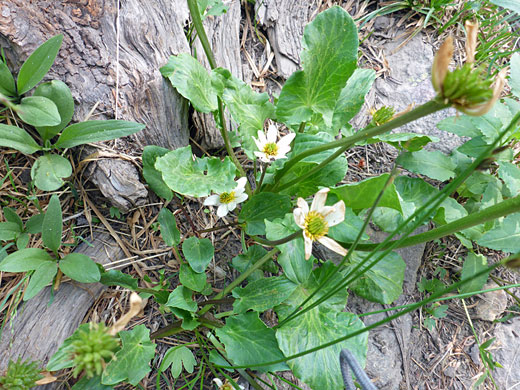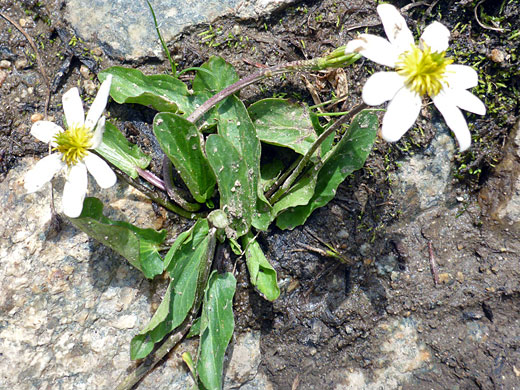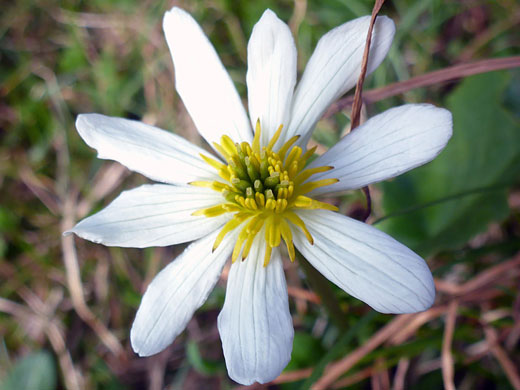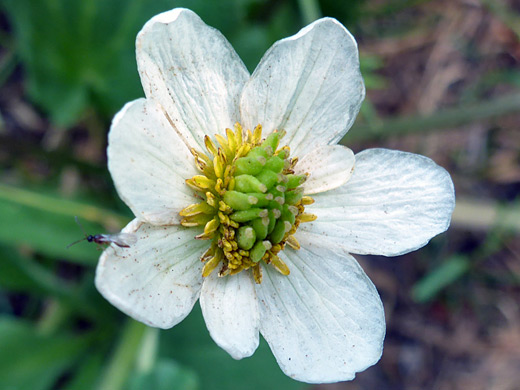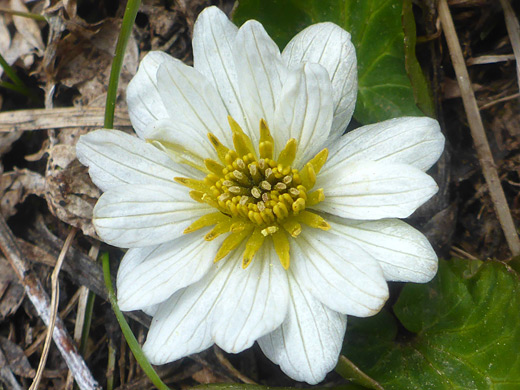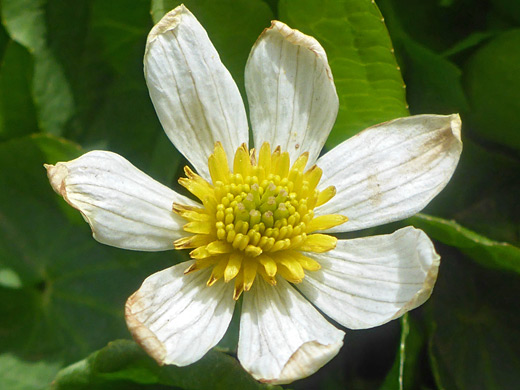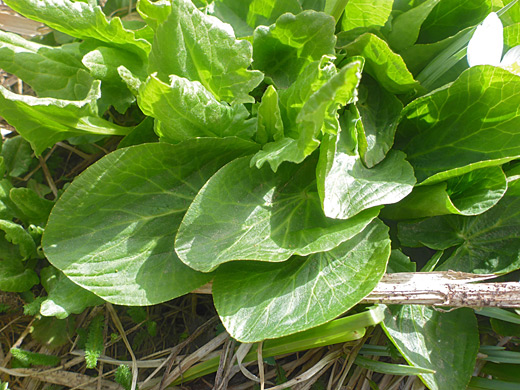Common name:
White marsh marigold
Family:
Scientific name:
Caltha leptosepala
Main flower color:
Range:
Mostly in the Pacific states and the Rocky Mountains
Height:
Up to 18 inches
Habitat:
Streambanks, lake margins, seeps, wet meadows; up to 12,800 feet
Leaves:
Ovate to oblong, often with backwards-projecting lobes at the base; up to 5 inches long
Season:
June to August
Flowers of caltha leptosepala are usually produced singly or in pairs; less often a cluster of three or four, and they are around 1.5 inches in diameter, formed of between 5 and 12 white or pale yellow, elliptic to oblong sepals (often with blue tints underneath), around a group of up to 40 yellow stamens and a similar number of green pistils. When fertilized, the pistils expand to form narrow, cylindrical, upwards-pointing, slightly curved, green fruits (follicles), which gradually elongate. The sepals are crossed by a few lengthwise veins.
Flowers form on top of stems that have at most one leaf, but are usually leafless. The long-stalked (up to 10 inches) basal leaves are relatively large, generally oval in shape, and have a smooth, waxy surface with a branched pattern of lighter green veins. Leaf margins are wavy, or shallowly toothed. All plant parts are hairless.
Flowers form on top of stems that have at most one leaf, but are usually leafless. The long-stalked (up to 10 inches) basal leaves are relatively large, generally oval in shape, and have a smooth, waxy surface with a branched pattern of lighter green veins. Leaf margins are wavy, or shallowly toothed. All plant parts are hairless.
All Contents © Copyright The American Southwest | Comments and Questions | Contribute | Site Map



